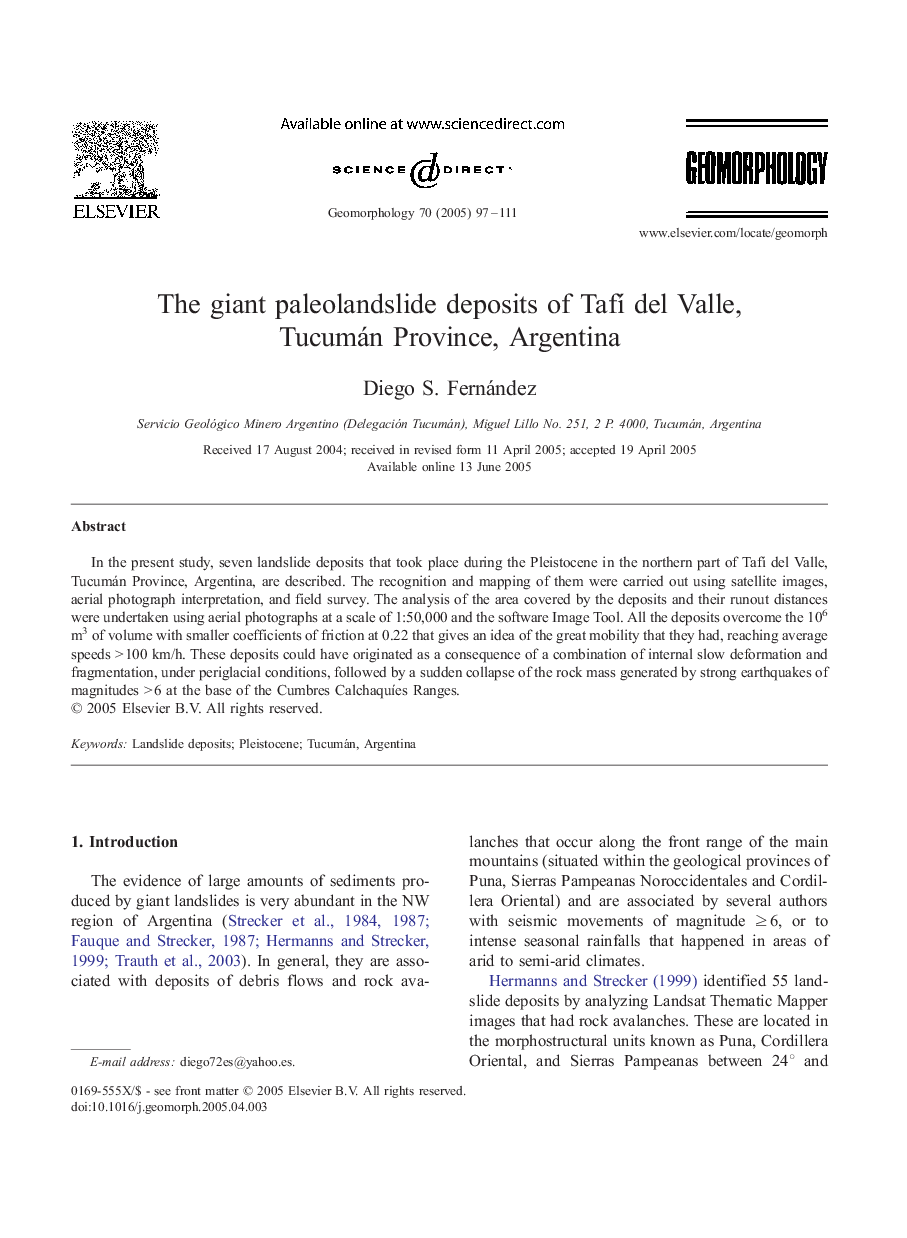| Article ID | Journal | Published Year | Pages | File Type |
|---|---|---|---|---|
| 9524854 | Geomorphology | 2005 | 15 Pages |
Abstract
In the present study, seven landslide deposits that took place during the Pleistocene in the northern part of Tafà del Valle, Tucumán Province, Argentina, are described. The recognition and mapping of them were carried out using satellite images, aerial photograph interpretation, and field survey. The analysis of the area covered by the deposits and their runout distances were undertaken using aerial photographs at a scale of 1:50,000 and the software Image Tool. All the deposits overcome the 106 m3 of volume with smaller coefficients of friction at 0.22 that gives an idea of the great mobility that they had, reaching average speeds > 100 km/h. These deposits could have originated as a consequence of a combination of internal slow deformation and fragmentation, under periglacial conditions, followed by a sudden collapse of the rock mass generated by strong earthquakes of magnitudes > 6 at the base of the Cumbres CalchaquÃes Ranges.
Keywords
Related Topics
Physical Sciences and Engineering
Earth and Planetary Sciences
Earth-Surface Processes
Authors
Diego S. Fernández,
